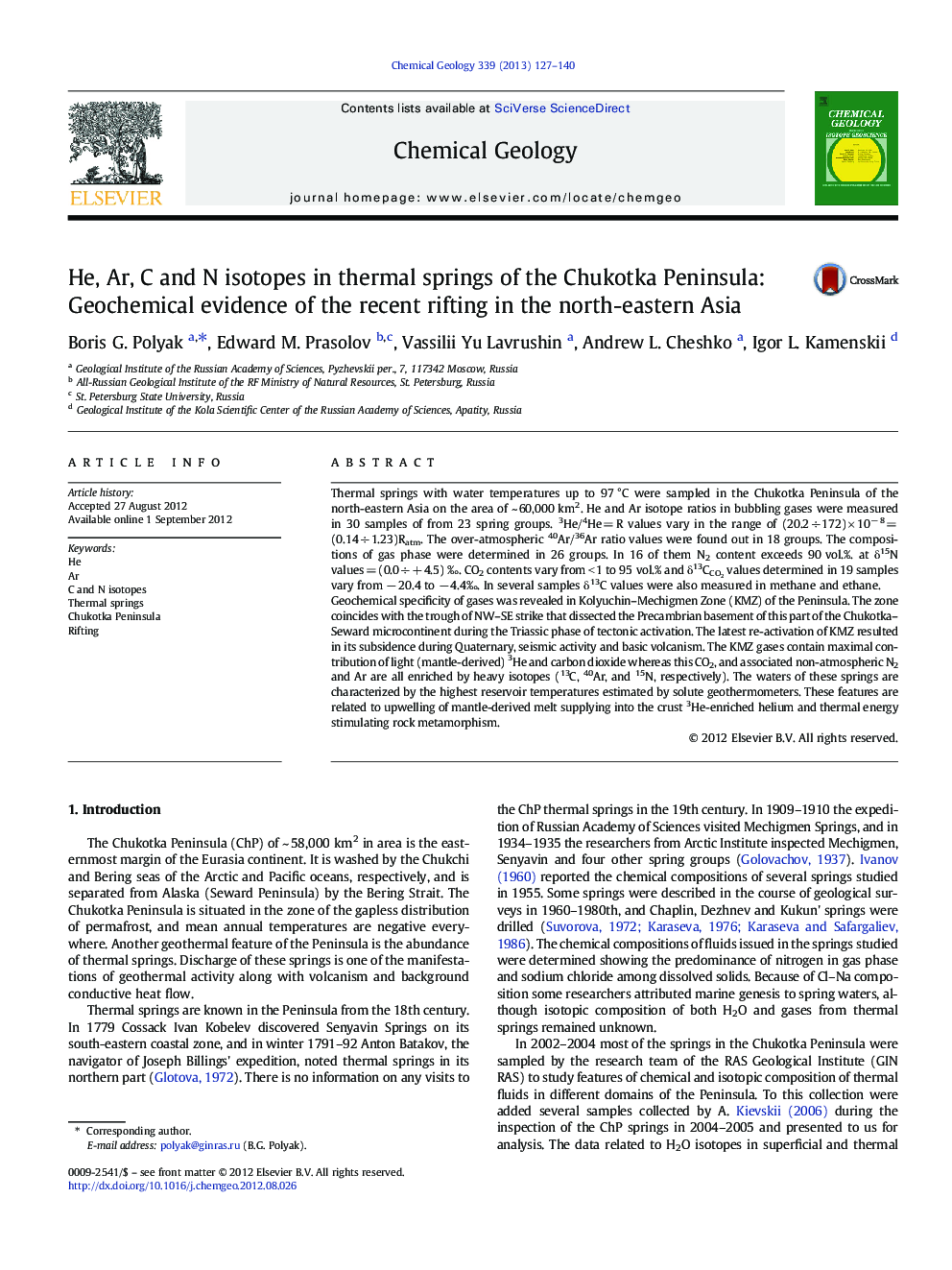| کد مقاله | کد نشریه | سال انتشار | مقاله انگلیسی | نسخه تمام متن |
|---|---|---|---|---|
| 4699132 | 1637629 | 2013 | 14 صفحه PDF | دانلود رایگان |

Thermal springs with water temperatures up to 97 °C were sampled in the Chukotka Peninsula of the north-eastern Asia on the area of ~ 60,000 km2. He and Ar isotope ratios in bubbling gases were measured in 30 samples of from 23 spring groups. 3Не/4Не = R values vary in the range of (20.2 ÷ 172) × 10− 8 = (0.14 ÷ 1.23)Ratm. The over-atmospheric 40Ar/36Ar ratio values were found out in 18 groups. The compositions of gas phase were determined in 26 groups. In 16 of them N2 content exceeds 90 vol.%. at δ15N values = (0.0 ÷ + 4.5) ‰. CO2 contents vary from < 1 to 95 vol.% and δ13CCO2 values determined in 19 samples vary from − 20.4 to − 4.4‰. In several samples δ13C values were also measured in methane and ethane.Geochemical specificity of gases was revealed in Kolyuchin–Mechigmen Zone (KMZ) of the Peninsula. The zone coincides with the trough of NW–SE strike that dissected the Precambrian basement of this part of the Chukotka–Seward microcontinent during the Triassic phase of tectonic activation. The latest re-activation of KMZ resulted in its subsidence during Quaternary, seismic activity and basic volcanism. The KMZ gases contain maximal contribution of light (mantle-derived) 3He and carbon dioxide whereas this CO2, and associated non-atmospheric N2 and Ar are all enriched by heavy isotopes (13C, 40Ar, and 15N, respectively). The waters of these springs are characterized by the highest reservoir temperatures estimated by solute geothermometers. These features are related to upwelling of mantle-derived melt supplying into the crust 3He-enriched helium and thermal energy stimulating rock metamorphism.
► He, Ar, C and N isotopes in Chukchi Peninsula thermal springs were studied for the first time.
► Concerted spatial variations in the 3He/4He, 40Arrad, δ13CCO2 and δ15N values were revealed.
► These variations are explained by recent rifting and mantle-derived intrusions in the NE Asia.
Journal: Chemical Geology - Volume 339, 15 February 2013, Pages 127–140